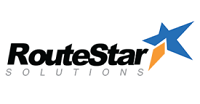Yes, most route planning software is compatible with different devices and platforms. Users may now plan their journeys with equal convenience and functionality on a desktop computer, tablet, or smartphone. Furthermore, many route planning software provides cloud-based storage, allowing users to view recorded routes from any location and on any device. This adaptability makes it easier for individuals and organizations to keep organized and productive when on the go.
List of 20 Best Route Planning Software
the GraphHopper Directions API, the perfect solution for your route planning and optimization needs. Our API offers global coverage and easy integration with data from OpenStreetMap, providing a cost-effective and customizable option to elevate your...Read More GraphHopper Directions API
Routific is a route planning software designed for efficient and effective transportation and logistics operations. It offers a variety of features, including driver management, API integration, customer and order import, analytics and reporting, and...Read More Routific
Map Suite GPS Server solution for efficient GPS data management. Designed with superior features such as real-time tracking, geofencing, and optimized routing, this powerful tool caters to the specific needs of fleet management, asset tracking, and v...Read More Map Suite GPS Server
Maxoptra is a route optimization software that transforms delivery and service operations by streamlining processes and enhancing customer satisfaction. Its dynamic scheduling and flexible route planning cater to the changing demands of contemporary...Read More Maxoptra
TMW Systems is an advanced software solution designed to efficiently manage transportation services. With powerful features like real-time data analysis, optimized routing, and streamlined workflows, it simplifies processes and enhances decision-maki...Read More TMW Systems
RouteStar - the unparalleled solution for optimizing routes for delivery and service companies. This powerful software is tailored to enhance efficiency and streamline operations for businesses. Its seamless integration with QuickBooks provides a sea...Read More RouteStar
SimpliRoute is a logistics optimization software designed to maximize delivery efficiency for businesses of all sizes. Our platform offers tailored solutions to streamline logistics processes and improve key performance metrics. By utilizing SimpliRo...Read More SimpliRoute
Route4Me is route planning software built for both enterprises and small businesses. Utilizing global mapping data, users can effortlessly generate, share, and organize optimized vehicle routes. Featuring advanced functionality, Route4Me facilitates...Read More Route4Me
PC*MILER is the leading commercial routing and mileage software designed to optimize fleet operations and reduce costs for businesses. Used by industries worldwide, it provides precise routing, scheduling, and navigation specifically tailored for com...Read More PC*MILER
Locus Dispatcher - an advanced logistics software that transforms delivery processes. Powered by AI, it efficiently plans routes, boosts productivity, and ensures on-time deliveries. Trusted by top companies, it provides cost-effective solutions and...Read More Locus Dispatcher
RouteSavvy is a highly efficient web-based solution for managing routes and tracking drivers in real-time. Specifically designed for businesses in the pick-up and delivery and service call industries, this software offers Territory Management and Liv...Read More RouteSavvy
Discover the impressive capabilities of FleetUp is a fleet management software. With real-time tracking, solar-powered asset monitoring, and advanced theft prevention, FleetUp streamlines operations, lowers expenses, and promotes safety for businesse...Read More FleetUp
Increase business productivity and optimize routes with MapAnything. Our comprehensive solution offers driver management and live tracking features for both web and mobile platforms, giving businesses a deeper understanding of their current operation...Read More MapAnything
A program, Route Optimizer. Designed for the sole purpose of streamlining delivery routes, it efficiently reduces travel time and fuel costs. Our user-friendly interface and real-time updates ensure maximum productivity and timely deliveries, leading...Read More Route Optimizer
RouteXL is a leading route optimization software that stands out for its exceptional geocoding, data management, and GPS tracking features. With its user-friendly Drag & Drop Scheduling and accessibility through Cloud, SaaS, and Web platforms, RouteX...Read More RouteXL
Greenplan, a innovative software that takes on the complexities of transportation logistics. Leveraging algorithm, it simplifies the process of transporting goods and people, prioritizing both efficiency and environmental sustainability. With its hol...Read More Greenplan
Elite EXTRA is a leading software solution designed for last mile logistics, allowing businesses to streamline their operations with advanced features for route planning, live tracking, and managing returns. Our customizable SaaS platform is trusted...Read More Elite EXTRA
Road Warrior - the premier route planning software designed for drivers and teams. Say farewell to unnecessary delays and expenses with our easy-to-use features and transparent pricing. Our app guarantees efficient navigation to your destinations, al...Read More Road Warrior
MyRouteOnline is solution for efficient transportation management. This powerful software allows you to easily monitor your vehicles, ensuring timely delivery and optimal productivity for your business. With advanced features and real-time updates, y...Read More MyRouteOnline
Mapotempo Web, an efficient and user-friendly route planning and optimization software designed to simplify your delivery and collection processes. Its advanced algorithms and intuitive interface make it easy to minimize operational costs, reduce tra...Read More Mapotempo Web
Learn More About Route Planning Software
- What Is Route Planning Software?
- What Are The Recent Trends In Route Planning Software?
- Benefits Of Using Route Planning Software
- Important Factors To Consider While Purchasing Route Planning Software?
- What Are The Key Features To Look For In Route Planning Software?
- Why Do Businesses Need Route Planning Software?
- How Much Time Is Required To Implement Route Planning Software?
- What Is The Level Of Customization Available In Route Planning Software?
- Which Industries Can Benefit The Most From Route Planning Software?
- Conclusion
What Is Route Planning Software?
Introduction: Route planning software is a powerful tool that helps businesses and organizations optimize and streamline their transportation and logistics operations. This program uses powerful algorithms and real-time data to assist organizations build efficient, cost-effective, and accurate routes for their fleets, resulting in increased production and customer satisfaction. Benefits:
1. Increased Efficiency: Route planning software eliminates the guesswork in determining routes for your vehicles and drivers. It creates the most effective routes by taking into account traffic patterns, vehicle size and weight, and delivery time frames. This reduces travel time, fuel consumption, and operating costs.
2. Real-Time Tracking: Route planning software allows you to track your cars and drivers in real-time. This allows you to track their progress, make route adjustments, and assure timely deliveries. You can also inform customers with exact arrival times, which improves their overall experience.
3. Increased Customer Satisfaction: By optimizing routes, organizations may ensure on-time delivery while decreasing the likelihood of missed or delayed deliveries. This increases client satisfaction, retention, and loyalty. Businesses may improve their client experience by tracking and communicating with them.
4. Cost Savings: Route planning software helps firms save money by lowering fuel consumption, vehicle wear and tear, and labor costs. Businesses can save a lot of money over time by optimizing routes and avoiding unnecessary travel.
5. Scalability: Most route planning software provides scalable solutions, which means it can expand alongside your company. As your company grows and demand rises, our software will adapt and continue to give effective route planning solutions.
What Are The Recent Trends In Route Planning Software?
Route planning software is a powerful tool that may save time, increase efficiency, and boost overall production for organizations of all kinds. As technology advances, there have been several notable trends in the field of route planning software. These developments have the potential to revolutionize the way businesses plan and manage their routes, therefore it is critical for purchasers to keep informed and up to date.
We'll look at the latest trends in route planning software that buyers should be aware of:
1. Real-Time Tracking And Updates: With the advent of GPS technology and connected devices, real-time tracking and updates have become a common feature in route planning software. This enables firms to track their trucks and routes in real time, allowing for on-the-spot modifications and increased efficiency.
2. Cloud-Based Solutions: Cloud-based solutions are gaining popularity because they provide numerous advantages, including remote access, automatic upgrades, and data backup. This means that organizations may use route planning software from any device with internet connectivity, freeing them from the confines of a physical office.
3. Integration With Other Systems: As firms progressively use diverse software solutions to manage various areas of their operations, the requirement for system integration grows. Route planning software that is compatible with other solutions, such as customer relationship management or inventory management, can improve overall efficiency and streamline operations.
4. Optimization For Numerous Modes Of Transport: As omnichannel operations become more prevalent, organizations are searching for software solutions that can optimize routes for numerous modes of transportation, such as truck, air, and sea delivery. This increases efficiency, lowers costs, and provides better customer service.
5. Artificial Intelligence And Machine Learning: The incorporation of AI and ML into route planning software has been a game changer. These tools can analyze data, detect patterns and trends, and provide data-driven route recommendations. This increases accuracy and efficiency, making route planning software a vital tool for enterprises.
Benefits Of Using Route Planning Software
Route planning software provides numerous benefits to businesses of all sizes and sectors. It simplifies and optimizes the process of planning routes for deliveries, services, or sales visits, saving time, money, and resources.
1. Enhanced Efficiency: One of the most significant advantages of employing route planning software is enhanced efficiency. Using powerful algorithms and real-time data, the software can generate the most effective routes for many stops, taking into consideration aspects such as traffic, distance, and time. This saves drivers time while also lowering fuel expenses and vehicle wear and tear.
2. Improved Client Service: Making accurate and timely deliveries or service calls is critical to sustaining positive client relationships. Route planning software enables organizations to schedule routes in real time, making it easier to handle last-minute adjustments or rerouting. This contributes to a more dependable and efficient service, resulting in higher customer satisfaction and loyalty.
3. Cost Savings: As previously stated, route planning software can assist reduce gasoline costs by optimizing routes and eliminating needless mileage. Furthermore, it saves organizations money on labor by lowering the amount of time spent manually arranging routes. Businesses that can plan more effective routes can increase the number of deliveries or service visits they make per day, resulting in more income and profit.
4. Real-Time Tracking: Some route planning software includes real-time tracking tools, which allow firms to track and monitor their cars' progress. This not only ensures on-time deliveries or service calls, but it also gives useful information for future route planning and performance evaluations.
5. Increased Safety: Route planning software considers traffic, weather, and road conditions to help drivers avoid potential risks and take the safest and most efficient routes. This can help to decrease accidents and protect the safety of drivers, vehicles, and cargo.
6. Data Analysis And Insights: Most route planning software generates thorough reports and analytics, providing businesses with useful insights into their delivery or service performance. This data can assist uncover inefficiencies or areas for improvement, allowing for more informed business decisions.
Important Factors To Consider While Purchasing Route Planning Software?
When looking to acquire route planning software, there are various variables to consider to ensure that you make the best option for your company. After all, route planning is an important part of logistics and transportation that can significantly affect the efficiency and profitability of your operations.
Let's explore, we'll go over the key things to consider when selecting route planning software.
1. Scalability: The first consideration is the software's scalability. Your company's requirements may evolve and alter over time, so it's critical to select a solution that can support these changes. Look for software with multiple pricing and functionality tiers, allowing you to upgrade or downgrade as needed.
2. Compatibility: Make sure the route planning software is compatible with your current systems and infrastructure. This includes your fleet management systems, GPS devices, and any other equipment used for logistics management. Compatibility difficulties can cause delays, errors, and general inefficiency.
3. Accuracy And Reliability: The route planning software you select should be precise and dependable. This implies it should be able to provide the most efficient routes, regardless of how complex your delivery network is. Furthermore, the software should be capable of handling unforeseen changes or disturbances in real time, ensuring that activities run smoothly.
4. Customization Options: When it comes to route planning, each organization has its own set of wants and requirements. As a result, selecting software that allows for customisation is critical. This allows you to customize the software to meet your individual business demands rather than having to adapt your operations to the program.
5. User-Friendly Interface: A user-friendly interface is essential for every software, including route planning solutions. It should be simple to navigate and utilize, with a well-organized structure. This will make it easier for you to manage your routes and for your drivers to adhere to the specified routes.
6. Reporting And Analytics: Comprehensive reporting and analytics are required to evaluate the efficiency and performance of your routes. Look for software that provides extensive reports with information such as travel duration, mileage, fuel use, and more. This data can help you pinpoint areas for improvement and make data-driven decisions.
7. Customer Support: Regardless of how user-friendly and efficient the software is, you may run into problems or have queries. As a result, it's critical to find a supplier that provides dependable customer service, whether via phone, email, or chat. This guarantees that you have access to help when you need it.
What Are The Key Features To Look For In Route Planning Software?
Route planning software is a critical tool for businesses and organizations that rely on smooth transportation and logistical operations. The correct route planning software may help trucking firms, delivery services, public transit systems, and field support teams streamline operations and increase efficiency. But with so many options on the market, it can be difficult for purchasers to make the proper decision. That is why knowing what vital features to seek for in route planning software is critical.
1. Route Optimization Capabilities: Route planning software's major job is to optimize routes and produce timetables that are both efficient and cost-effective. Look for software that can produce the most optimal routes by taking into account critical variables like traffic updates, vehicle capacities, and driver schedules. This feature has the potential to dramatically reduce fuel expenses while also improving on-time delivery rates.
2. Real-Time Tracking And Updates: In today's fast-paced world, real-time data is essential for route planning. Make sure the software you chose provides real-time tracking and updates, allowing you to monitor your vehicles and make adjustments while on the go. This tool also allows you to communicate with drivers, receive notifications of delays or deviations, and provide precise delivery estimates to customers.
3. Integration Of GPS And Other Systems: Integration with GPS and other technologies is critical for effective and precise route planning. This enables seamless communication between cars and software, resulting in real-time updates on location, traffic conditions, and delivery statuses. It also supports automatic route alterations based on real-time data, which saves time and reduces errors.
4. Customization Options: When it comes to route planning, each organization has its own set of wants and expectations. Look for software that has customization choices, so you may adapt the settings to your individual requirements. This includes personalized routing rules, vehicle and driver preferences, and seamless connection with current systems and databases.
5. Reporting And Analysis: A thorough reporting and analytics feature can provide useful information about your transportation operations. Look for software that provides detailed reports on factors like fuel use, driver performance, delivery timings, and so on. These insights can help you find areas for development and make data-driven decisions to improve your operations even further.
6. User-Friendly Interface: Route planning software should be user-friendly and simple to use. A complex and confusing interface might result in errors and inefficiency. Look for software with a clear and straightforward design that requires little training, making it easy for anybody in your organization to use.
Why Do Businesses Need Route Planning Software?
One of the most difficult tasks for firms with a fleet of cars or a mobile workforce is maximizing their routes for efficiency and cost savings. Here's where route planning software comes in. Businesses rely on this software's capacity to generate optimum routes that save time, gasoline, and, ultimately, money. But why is route planning software important for businesses?
Let us take a closer look at the benefits it provides:
1. Increased Efficiency: Route planning software allows firms to build the most efficient routes for their drivers and technicians. This not only saves time, but also lowers fuel expenses and vehicle wear and tear. Businesses that streamline their routes can also serve more consumers per day, resulting in higher production.
2. Cost Savings: Route planning software's optimized routes save organizations a considerable amount of money. Businesses can save operational expenses by taking shorter routes and using less gasoline, which improves their bottom line.
3. Real-Time Tracking: Most route planning software includes GPS tracking capabilities, allowing businesses to follow the location of their cars and the progress of their routes in real time. This allows them to make revisions as needed, resulting in timely deliveries and outstanding client service.
4. Increased Customer Satisfaction: Route planning software benefits both the business and its customers. Businesses can boost customer satisfaction by estimating arrival times accurately and delivering on time, resulting in repeat business and favorable word-of-mouth.
5. Improved Resource Allocation: Some route planning software includes resource allocation features, which enable firms to assign assignments to specific drivers or personnel depending on their proximity to a customer's location or skill set. This results in more efficient resource allocation and worker use.
How Much Time Is Required To Implement Route Planning Software?
The time required to implement route planning software varies based on a number of factors. These include the size of your company, the complexity of your routes, and the features and integrations you choose to incorporate into your program. Typically, the time required ranges from a few days to a few weeks. For smaller enterprises with simpler routes, the deployment procedure can be done in a few days.
This includes configuring the software, entering your delivery addresses, and adjusting your preferences. This step can be accomplished efficiently using the software company's customer assistance or training resources. However, for larger enterprises with more intricate routes and more users, the deployment procedure could take several weeks.
This is because additional training and modification may be required to guarantee that the software is fully optimized for your specific business requirements. It is also critical to include all necessary team members in the implementation phase to guarantee a smooth transition into business operations. It is important to note that the degree of assistance and resources supplied by the route planning software firm can also have an impact on the time necessary for deployment. Some organizations may provide a specialized account manager or training sessions to help speed up the deployment process.
What Is The Level Of Customization Available In Route Planning Software?
Route planning software is highly customizable, allowing firms to create a system that is tailored to their specific needs. The extent of customization varies based on the program, although most solutions allow for extensive tweaking. First, businesses can personalize the routes by entering their own locations and destinations.
This enables precise and accurate route planning that considers delivery timetables, traffic patterns, and driver availability. Furthermore, many route planning software supports the modification of several routes inside a single plan. This is especially important for organizations with a high volume of deliveries or service stops because it allows efficient and optimized routes to be defined for each driver or vehicle.
Businesses can also change the software's settings to meet their operations and tastes. This offers options for desired routes, vehicle types, and driver shifts. These adjustments can help organizations save time, money, and resources by designing more efficient and cost-effective routes. Furthermore, advanced route planning software provides further levels of customization, such as the ability to configure alerts and notifications for certain occurrences or conditions.
This can help businesses be informed and prepared for any potential disruptions or changes that may occur along their routes. Overall, the level of customization offered in route planning software enables firms to build and optimize routes based on their individual needs and goals. Businesses can use this functionality to increase efficiency, cut expenses, and improve their overall operations.
Which Industries Can Benefit The Most From Route Planning Software?
Route planning software has become an indispensable resource for enterprises of all sizes and industries. Its capacity to optimize routes, save time and fuel costs, and boost efficiency has made it an invaluable asset for businesses seeking to simplify their operations. But which industries will profit the most from employing this software?
Let's take a closer look at some of the industries that will benefit the most from implementing route planning software into their operations.
1. Transportation And Logistics: Route planning software is a game changer for organizations in this industry. These businesses must deal with a high volume of deliveries, thus efficient route planning is critical for lowering costs and achieving consumer expectations. Route planning software allows these organizations to plan and optimize routes depending on traffic, weather, and delivery time windows, resulting in faster and more efficient deliveries.
2. Delivery Services: Couriers and food delivery companies can both profit substantially from route planning software. These enterprises frequently have to navigate crowded city streets and make several stops in short periods of time. They can use route planning software to improve their routes, resulting in more timely and cost-effective deliveries and increased client satisfaction.
3. Field Service Companies: Companies that provide repair and maintenance services rely on efficient route planning to properly serve their consumers. Using route planning software, these companies may allocate the nearest and most qualified technician to a job, decreasing travel time and boosting the number of customers they can serve in a day. This leads to cost savings and increased customer satisfaction.
4. Sales Teams: Sales teams who are constantly on the go can benefit from route planning software. By streamlining their itineraries, sales professionals can visit more clients in a single day, increasing productivity and sales. Route planning software, which may be integrated with customer relationship management (CRM) software, can also give sales teams with important insights and data to help them make better decisions.
5. Municipalities And Government Agencies: Route planning software is not only useful for businesses; it may also aid municipalities and government agencies. For these organisations, efficient and optimised routes are critical for public transport, rubbish collection, and other services. Route planning software allows them to ensure that routes are planned for optimal efficiency and convenience for citizens.
Conclusion
To summarize, choosing the correct route planning software is critical for any firm trying to streamline processes and improve efficiency. With so many options on the market, purchasers must conduct careful research and consider their unique needs before making an informed decision. First, it is critical to identify the essential features and functionalities required for the business.
This could include real-time tracking, unique routes, and connection with other software systems. Different software suppliers may offer varying levels of these functions, so it is critical to determine which ones are most important to your firm. Second, assess the scalability of the software. As your organization grows, you may need more routes or users, so selecting software that can easily adapt these changes is critical in the long term.
Next, examine the software's simplicity of use and user interface. A user-friendly platform can help your employees adapt and use the software more effectively. This can also save time and resources for training and onboarding. In addition, inquire about the software provider's customer support and maintenance. A dependable support system can play a significant role in the success of using the program efficiently.
Finally, consider the cost and return on investment. While it may be tempting to choose the lowest solution, consider the long-term advantages and potential savings that more expensive but comprehensive software can provide. Finally, selecting the best route planning software for your firm is a significant decision that must be carefully considered in light of your unique requirements and priorities. By following this buyer's guide, you can be confident that you are making an informed selection that will benefit your business for the long run.
Route Planning Software FAQ's
Can Route Planning Software Be Accessed Across Multiple Devices And Platforms?
Is Route Planning Software Future-Proof And Adaptable To Emerging Technologies Like AI, Blockchain Or IoT?
Yes, most route planning software is intended to be future-proof and adaptable to new technologies like AI, blockchain, and IoT. With the rapid evolution of technology, route planning software is constantly improving to stay up with the latest trends and technologies.
This means it can work with emerging technologies to enhance route optimization, efficiency, and data management. Furthermore, many route planning software providers continuously upgrade their systems to maintain compatibility with new technology.
Is There A Free Trial Offered To Assess Route Planning Software Before Committing?
Many route planning software vendors provide a free trial so that consumers can try the product's functionality before making a commitment. This enables organizations and people to determine whether the software fulfills their specific requirements and is user-friendly. Some companies may give a limited free trial, while others may provide a longer trial time. Take advantage of these trials to ensure that you are investing in the appropriate route planning software for your requirements.
Does Route Planning Software Offer Data Security Features And Meet Regulatory Compliance Standards?
Yes, most Route Planning Software includes data security features like encryption, access controls, and automatic data backups to protect critical information. They also follow industry-specific rules such as GDPR and HIPAA to ensure the secure handling of personal data. Furthermore, frequent security audits and updates are carried out to ensure compliance with changing legislation.
Can Route Planning Software Integrate Seamlessly With Existing Tools And Platforms?
Yes, most route planning software is meant to be compatible and easy to combine with other applications and platforms. Businesses benefit from smooth and effective operations because the software may smoothly link with their existing systems, such as GPS trackers, fleet management software, and CRM platforms.
It also eliminates the need for manual data entry, saving time and lowering mistake rates. Route planning software is a significant addition to any organization since it can combine with existing systems.






















